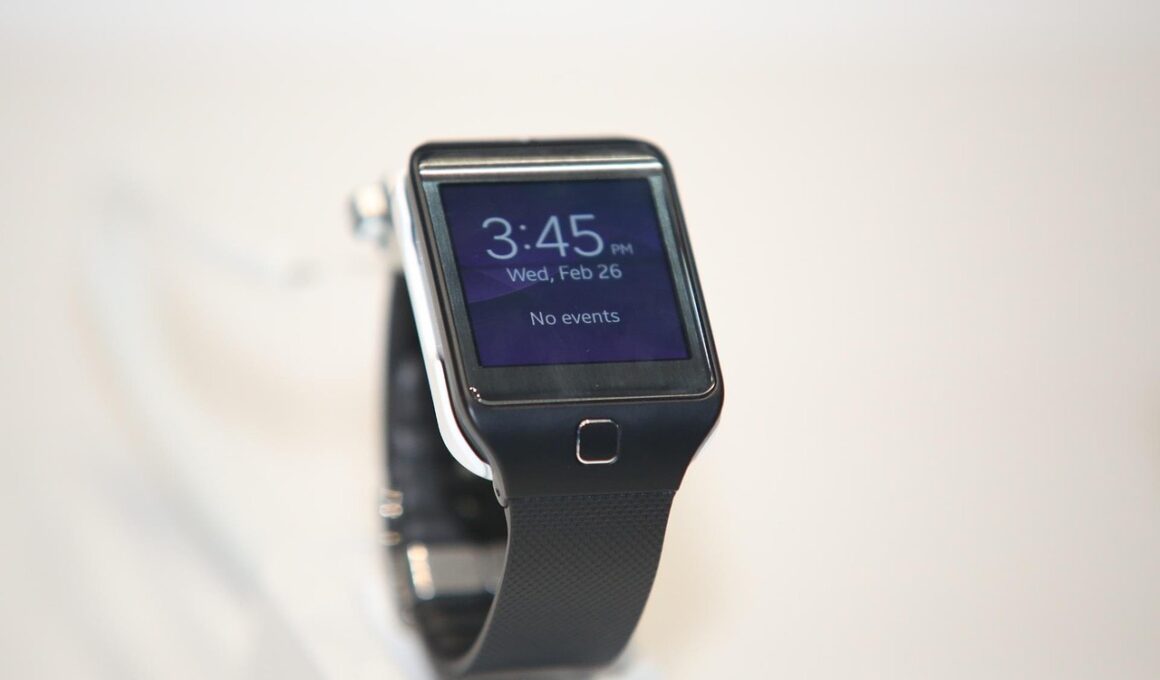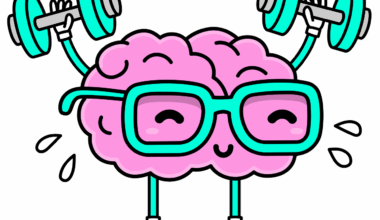Technology and HIIT: Utilizing Apps and Wearables for Better Training
High-Intensity Interval Training, or HIIT, has emerged as a highly effective exercise regimen that combines short bursts of intense activity with prolonged rest intervals. Many fitness enthusiasts now explore how modern technology enhances this type of training. One key area where technology impacts HIIT is through the development of various smartphone applications. These apps can provide users with customized workout plans, track progress, and offer motivational features. Additionally, they can connect users with a community of like-minded individuals, adding a social aspect that encourages accountability. With detailed metrics and analytics, users can fine-tune their workouts based on their individual performance and fitness goals. Furthermore, wearable technologies continue to revolutionize workouts, providing real-time data on heart rate, calories burned, and even blood oxygen level. These insights allow users to push themselves more efficiently, optimizing their training sessions. Also, integrated fitness trackers can seamlessly sync with HIIT apps, ensuring that users have all their performance data accessible in one interface. As a result, technology transforms workouts, delivering unique advantages to enhance HIIT training outcomes.
Benefits of Using HIIT Apps
The integration of mobile apps tailored for high-intensity interval training offers several impressive benefits for users. Firstly, these apps often incorporate scientifically backed workout strategies that help individuals achieve maximum efficiency. Users can easily select their fitness level and goals, enabling personalized workout experiences specifically tailored to meet their needs. Moreover, the flexibility of these applications permits users to engage in HIIT workouts virtually anywhere, eliminating the need for a gym. They can complete their training at home, in a park, or even a hotel room while traveling. Another crucial benefit lies in the tracking capabilities of these apps, which allow users to monitor their progress over time. Many of them can provide valuable insights into performance trends, helping users identify areas in which they can improve. Additionally, some apps feature community functions, enabling users to share achievements, participate in challenges, and even compete with friends. This social element contributes to motivation, making it easier for individuals to adhere to a regular training regimen. In essence, HIIT apps significantly enhance the user experience by maximizing convenience, personalization, and community engagement.
Wearable technology, especially fitness trackers and smartwatches, plays an essential role in enhancing the HIIT experience. These devices can monitor heart rate, track calorie expenditure, and assess overall physical activity effectively during workouts. For HIIT practitioners, knowing their heart rate in real-time is crucial to ensure they reach the desired training intensity. If users can identify their maximum heart rate and maintain their efforts within specific ranges, they can achieve the desired training effects while minimizing the risk of injury. Additionally, many wearables come equipped with built-in GPS functionality that can record the user’s location and distance, offering more comprehensive data for various workout styles. This integration of analytics empowers users to evaluate their performance after each session and refine their routines accordingly. Furthermore, advanced wearable tech even boasts features such as fatigue tracking, which can help users manage recovery. Overall, wearable devices significantly enhance modern HIIT workouts. Not only do they provide insights that allow users to optimize their sessions, but the compatibility with apps ensures that each fitness journey is well-tracked and guided effectively.
Creating a Structured HIIT Plan
While technology undeniably enhances HIIT training, having a well-structured plan is fundamental for success. Apps specifically designed for HIIT often incorporate various templates that outline effective sessions for different fitness levels. Users can select pre-defined workouts or collaborate with personal trainers through these platforms to customize their plans. It’s essential to balance high-intensity work periods with adequate rest intervals to ensure effective training while supporting recovery. Users can establish specific goals, such as weight loss or muscle gain, which further aids in choosing the right workout. Flexibility is also important; therefore, allowing users to modify their schedules based on their commitments ensures adherence to the routine. Another key component of effective planning involves monitoring progress through the app. Regularly assessing metrics can motivate users, encouraging them to work harder or shift their focus on weaknesses in performance. To maximize the impact of HIIT training, establishing a systematic approach through technology channels proves invaluable. In this way, a structured HIIT plan combined with the right technological tools yields superior results for practitioners.
Another significant advantage of technology in HIIT training lies in its accessibility. The growing availability of HIIT apps means anyone can access a wealth of workout routines at their fingertips. Regardless of prior experience or fitness level, users can find routines and instructions tailored to their specific needs. In addition, many of these applications offer free resources alongside premium options, making HIIT more approachable for all individuals. With guidance from experienced trainers or embedded coaches through these apps, even beginners can engage in effective workouts without fear of injury. By following structured routines, users develop proper exercise form and technique, which is crucial for maximizing results. With appealing visuals, detailed instructions, and engaging content, individuals are likelier to remain committed to their training. Furthermore, the presence of video demonstrations can enhance learning, allowing users to observe movements before execution. Overall, technology levels the playing field, empowering everyone with the tools necessary for safe and effective high-intensity interval workouts, promoting long-lasting fitness habits that fit today’s fast-paced lifestyles.
Challenges in Utilizing Tech for HIIT
While technology offers numerous benefits for HIIT training, some challenges are noteworthy. A common concern is the risk of fitness technology being a distraction during workouts. For some users, constantly checking their devices may impede their focus and intensity levels. Thus, finding a balance between tracking performance and maintaining a strong workout concentration is essential. In addition, the vast number of available apps can lead to confusion. With ongoing advancements in technology, users may struggle to select the most effective tools for their needs amidst overwhelming options. Guidelines and personal preferences can significantly shape these choices, but the variety can complicate the decision-making process. Furthermore, technology comes with potential reliability concerns. If devices malfunction or fail to sync data properly, it may demotivate users, negating the positive impact of tech assistance. Lastly, users must remain cognizant of how technological advancements continuously develop. Being adaptable to new tools while incorporating them into existing routines can sometimes slow down progress due to disruptions or adjustments. Therefore, finding a balance between embracing tech and traditional training methods is crucial for maximizing HIIT outcomes.
In conclusion, the intersection of technology and high-intensity interval training offers promising enhancements for fitness enthusiasts. By integrating mobile applications and wearable technology, users can personalize their workouts, monitor progress, and engage with a supportive community. The availability of structured HIIT plans through these tools lends itself to more efficient and effective training sessions tailored to individual preferences. However, while these advancements present numerous opportunities, staying mindful of potential distractions and challenges is essential. Finding the right balance becomes key to harnessing technology’s full potential in HIIT. Fitness enthusiasts can ultimately enjoy optimized workouts and significant results by integrating various tools with well-founded strategies. As the world of fitness continues to evolve, embracing innovation while remaining aware of personal needs contributes to a well-rounded approach to exercise. With dedication, understanding, and the right resources, individuals can pave their way to success through high-intensity interval training. Technology is an ally in this journey, equipping users with the capabilities to elevate their training and maximize the benefits of their efforts.


